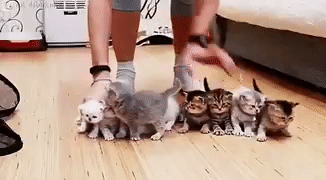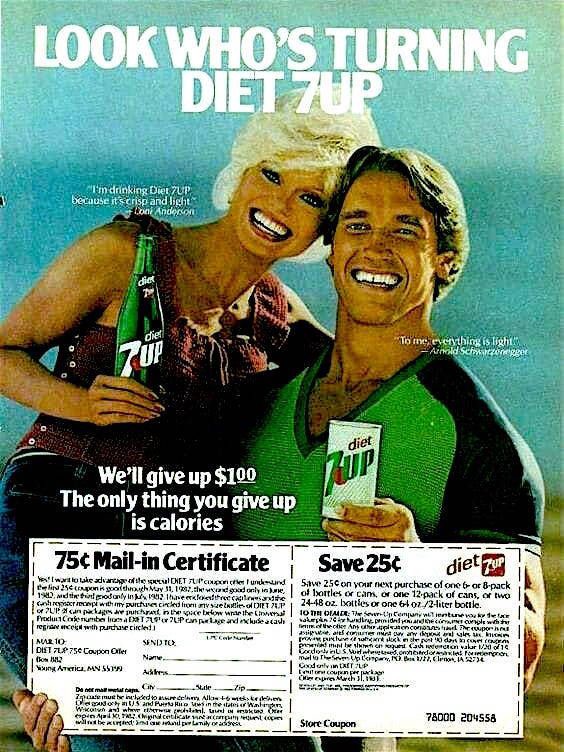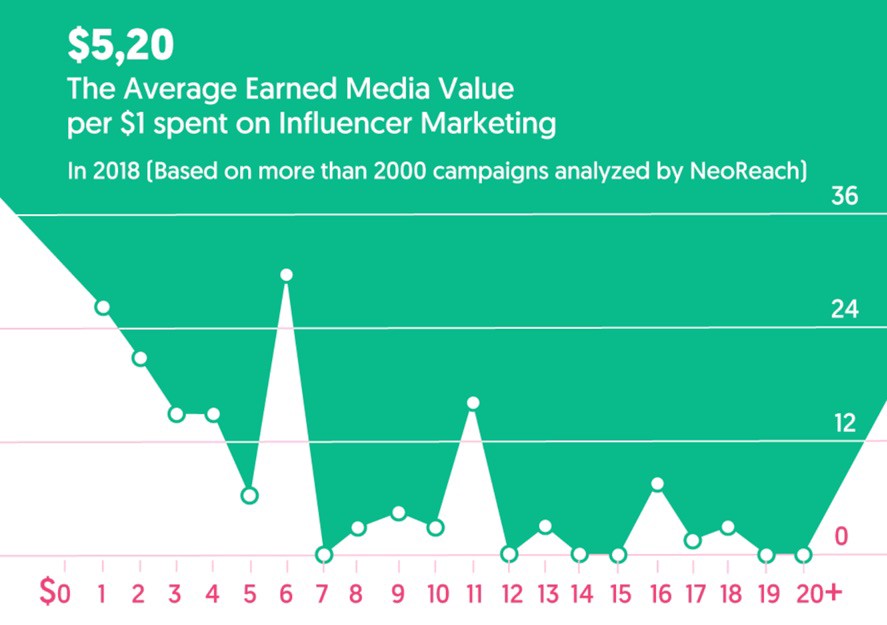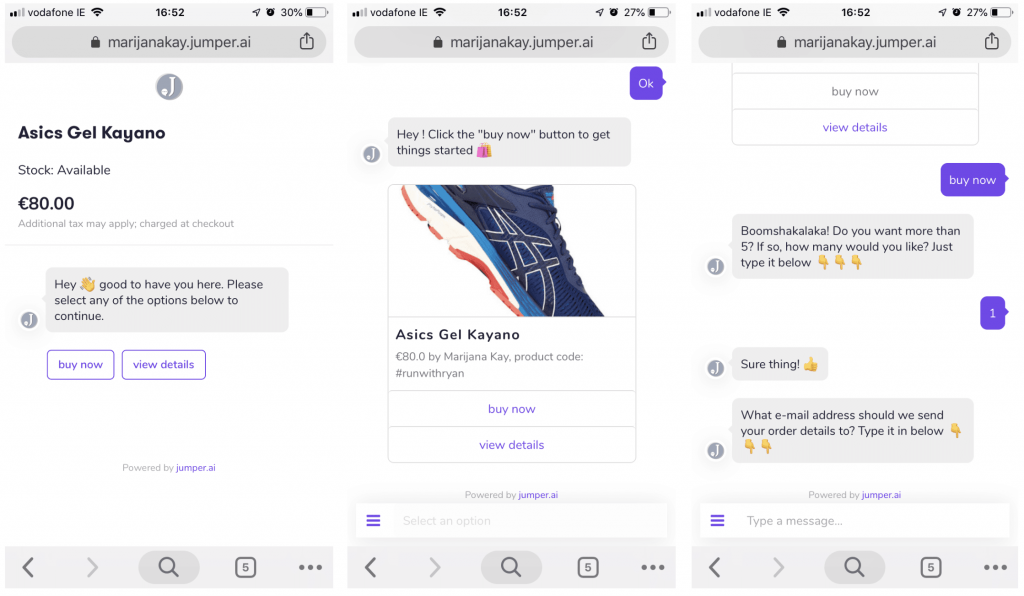Tell me if this sounds familiar.
– You’ve spent weeks searching for the best influencers in your market
– Days setting up the campaigns that’ll allow them to sell your products
– Hours answering questions, putting out fires, and basically helping everything run smoothly
And what do you get?
An increase in sales right? Which was the goal.
Thing is, a lot of store owners can’t track their influencer campaigns.
They don’t know for certain which influencer drove the most sales or who provided the highest revenue gains.
Which makes it almost impossible to know which influencers are worth working with again, and which need to be left behind.
If you’ve ever struggled with knowing which influencers help you drive the most sales, this is the article for you.
I’m going to detail a process to help you better track you’re influencer campaigns. One that’ll not only help you track overall sales, but also attribute sales to individual influencers.
Oh, and this process also has a much higher conversion rate than normal influencer campaigns.
But first, let’s look at the influencer marketing market as it is now.
Influencer marketing — what it is and why it’s worth your time.
In short, influencer marketing is the act of borrowing a personal brand’s authority and trust. It’s the act of using their clout to improve your own product’s reach and image.
Thing is, it’s a lot of work.
When you’re working with multiple influencers it can feel a little like trying to wrangle kittens.

The question is, are the benefits worth the hassle of trying to organize so many different campaigns.
The short answer is yes.
I mean, look back through history and you’ll see that influencer marketing is nothing new.
Brands have used people with influence and impact to help move their products for years. Take this old 7 Up ad that made use of one of the most recognizable faces of the time.

I doubt Arnold was a big drinker of sugary drinks, but the fact that his face is on the ad will definitely appeal to a segment of their audience.
Similar promotions are still prevalent today. Brands use well-known people to help them increase their reach.
They borrow the trust of these celebrities to make their brand seem more trustworthy, glamorous, or appealing.
Take the below for example:
- Michael Jordan helping sell Nike sneakers
- Cologne/perfume brands using the most glamorous celeb of the moment
- George Foreman and his now-famous grill
Brands have leveraged the established personal brands of celebrities for years.
The main issue with these promotions is the often tenuous link (if there is one at all) between the celebrity and the product (looking at you George Foreman).
This is where the subtle difference between a celebrity endorsement and influencer marketing comes in.
Influencer marketing is far more targeted than a celeb endorsement.
The influencer promoting the product has often built trust within a specific industry rather than having simple star appeal.
Out of the above, only Michael Jordan could boast that level of niche expertise.
Yes, he was a household name. But he was known because he was the best basketball player around. Having him promote basketball shoes was both a celebrity endorsement and influencer marketing campaign.
Nike traded off the trust and authority Jordan had in the area.
It worked incredibly and still does today.
Right now brands have access to countless micro-influencers. They’re able to target much smaller segments and more niche interests at far more affordable prices.
As the number of influencers grows, so too does the market. According to this study, you can now expect a $5.20 return for every $1 spent on influencer marketing.

Which seems even more profitable when you realize you have to put zero effort into building an engaged audience.
Find the right influencer and it’s there for the taking.
But there are a few major problems with running influencer marketing campaigns.
None so potentially damaging as the following.
The problem most influencer campaigns suffer from
Influencer marketing is growing from strength to strength.
However, there’s an inherent problem with the way most brands run their campaigns.
That problem is to do with ROI. The key metric you should be measuring all of your marketing spend on.
With influencer marketing, the vast majority of brands find it incredibly difficult to accurately measure the ROI from their influencer campaigns.
According to this eConsultancy study, only 18% of marketers include influencer marketing in their ROI calculations.

That means 82% of marketers running influencer campaigns are simply spending money on the act without knowing what sort of response it’s generating.
Which is crazy.
You wouldn’t pump money into ad campaigns if you didn’t know they were working. So why do the same with influencer marketing?
I can’t say for certain, but the above studies lead me to believe one thing.,
That a huge portion of marketers aren’t tracking influencer marketing ROI because it’s too difficult to track.
The good news is that’s no longer the case. In fact, I’ve got a method below that will not only help you track your overall influencer campaign effectiveness, but will let you drill down to individual influencers to know who’s driving the most sales for your brand.
How to Accurately Track Your Influencer Marketing Campaigns
The below method will give you a level of granularity in influencer tracking you’ve never had access to.
You can get a single campaign set up in minutes, and all you’ll need to get started are three simple elements.
1 — A product you’re trying to sell
2 — An influencer you’ve found to be a good fit between the audience and your product
3 — A Jumper.ai account (you can do this on the free account)
If you’re not sure what the third item is, I’ll take a few lines to quickly explain.
Jumper’s a social commerce solution. It allows you to sell your products directly through your social media accounts. Or the social media accounts of your partner influencers.
With social commerce, you’re able to massively streamline the purchase journey.
By selling directly on your social media feed, there are no redirects to your store, no complex purchase journeys, meaning fewer chances of users bouncing.
That means no redirects to your store and no complex purchase journey.
Selling through social with a conversational approach is relatively new. However, it’s specifically aimed at tackling the low conversion rates most social media campaigns achieve.

In contrast to that horrendously low 1.81% conversion rate, social commerce users are averaging around 20–30% CVR.
Conversations are more engaging. They offer the immediate responses modern consumers want.
And they’re better for making sales.
Below I’m going to explain the major difference of using Jumper to run your influencer campaigns.
Before I do, make sure you’ve signed up for a free Jumper account here.
After you’ve signed up, simply follow the instructions in this video.
The setup is what you’d expect of any software tool. However, I want to take a quick second to explain what makes the tracking here a little more detailed.
Below is an image of a product in the Jumper dashboard.

The outlined area in red is the hashtag chosen for this specific product.
Each product added to Jumper needs its own hashtag. Those hashtags serve a few purposes.
- They can, when used as a comment by a customer, kick off the chat that has an automated checkout attached (which in effect is like an add-to-cart button)
- They help you segment campaigns and promotions
- They allow for detailed tracking of your influencer’s success rates.
Say for example you’re working with 3 influencers. Ryan, Julie, and Greg.
You’d establish one product, duplicate it three times, then add a hashtag that identifies each and every influencer. In the above example, that’s #runwithryan.
You’d have similar hashtags for each influencer.
When they then share the link you send over, you’re able to track the effectiveness of each influencer for that specific product.
Customers won’t know the difference. The chat they’ll see will look the same — allowing them to choose their size and color variants whilst also processing payments for you.

However, what it will allow you to do is run the numbers of each influencer for each product against one another. So you have more detailed data for future optimizations.
After a few co-promotions you’ll not only have an increase in sales, but you’ll also know your best partners, products and platforms making future profitability all but assured.
The only thing left to do is double down on the elements that are working well to make even more money.
But that’s not all you should do…
Real marketing progress is made after the fact
I’m a firm believer in big ideas.
Marketing campaigns based on a new, big idea get much greater reach and drive far better results.
However, it’s only half the job of driving increasing levels of success.
The other half, the arguably more important half, is knowing what works. It’s knowing which actions, partnerships, ideas, and approaches drive greater gains.
If you’re not tracking everything from impressions and clicks to sales and revenue, you’re missing out.
The problem is, there are very few tools that offer specific tracking for unique campaigns. There’s a severe lack of detailed, helpful tools to help you run more effective affiliate campaigns.
This is where Refersion comes in.
Jumper might be able to help you connect with more people. It can help streamline the purchase journey and increase your conversion rate.
But you’re also going to want a specific tool that’ll help you measure the impact of your key campaign metrics and the lifetime value of the users they bring to you.
A tool like Refersion.
Refersion and Jumper are a perfect partnership. One allows you to quickly sell products through your influencer affiliates. The other helps you better understand how you should optimize your campaigns moving forward.
If you’re already running affiliate campaigns or working with influencers, these two tools could greatly increase your profitability.
You can check out Jumper right here. And for Refersion, simply follow this link.
— —
Author Bio
Pete Boyle is the founder of Have-a-Word and head of content for Jumper.ai. Jumper helps brands of all sizes streamline the social media purchase journey massively increasing sales and revenue.



